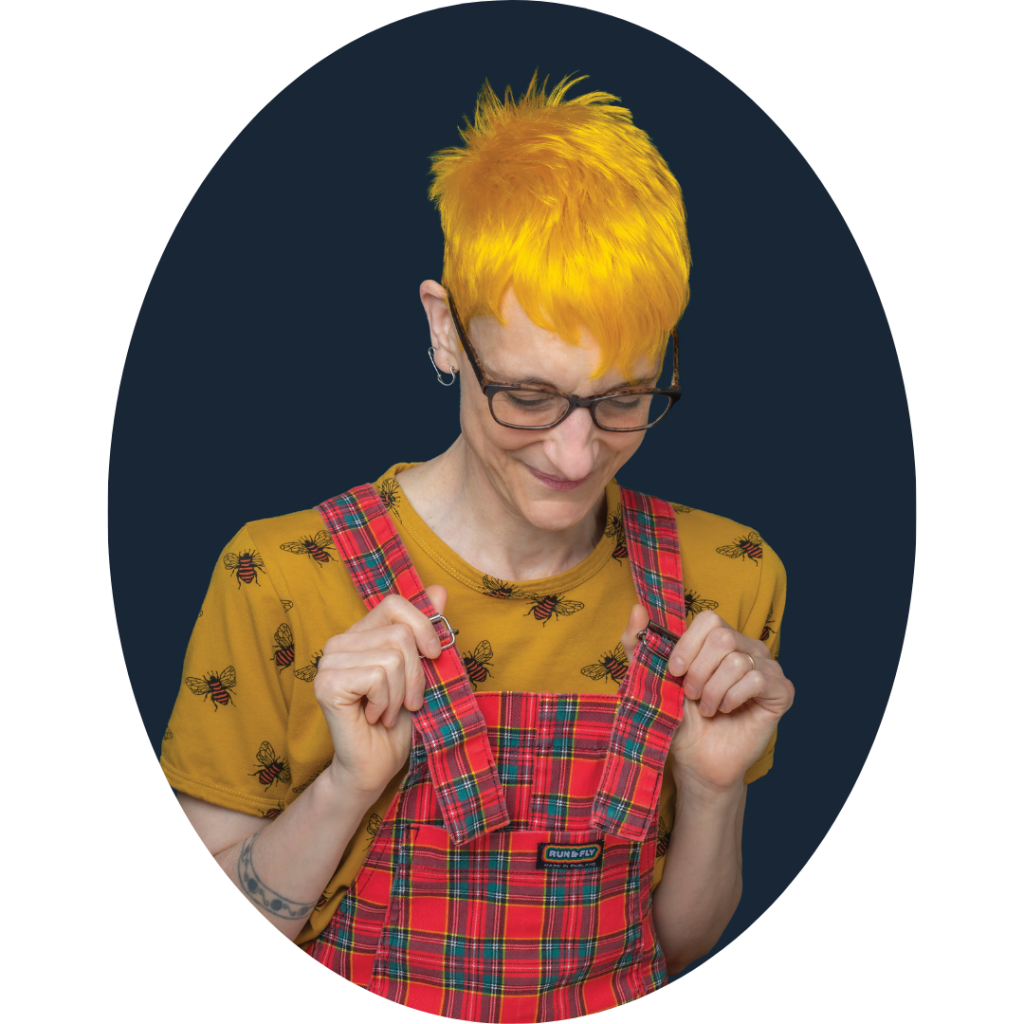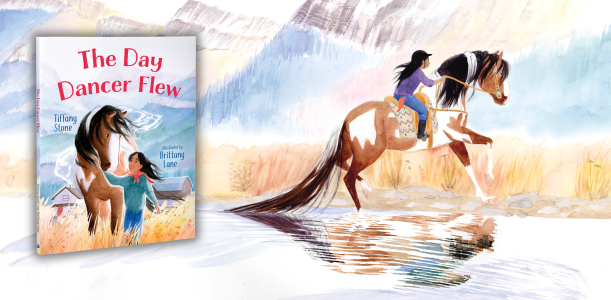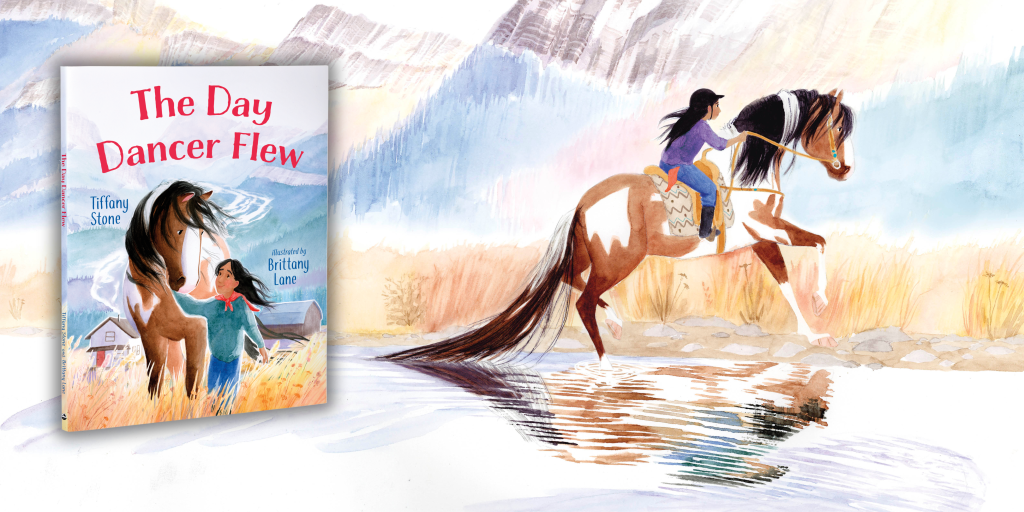The story is a much-needed reminder about the importance of community; it also offers a crucial takeaway: Even in the face of natural disaster and trauma, we must never stop attempting the seemingly impossible…A tremendous example of collective efforts in the wake of disaster.
—Kirkus Reviews
In author Tiffany Stone’s new picture book, The Day Dancer Flew, a young girl works to rescue her horse after a devastating flood.
What inspired you to write The Day Dancer Flew?
In 2021, heavy rainfall caused severe flooding in parts of BC, including in Abbotsford, an agricultural community near where I live. This meant I got to witness some of the devastation firsthand. Roads were washed out and farmers’ fields were underwater. The impact on both people and farm animals was enormous. Yet among all the tragic news stories, I found stories of hope, of strangers coming together to help in whatever ways they could. One of these was the real-life air rescue of a horse. Although this particular story took place in another part of BC, it still resonated with me in many ways—with my love of animals, my belief in community and how a helicopter played a crucial role in the rescue; this last detail spoke to me personally as my dad was a helicopter engineer.
What did your process for writing the book look like?
I started by researching the real-life event, going through as much news coverage as I could find, including this short video clip of the moment the horse was lifted off the ground and into the air. Notice how he relaxes once he’s “flying”. I also did some additional research about horses, particularly about their behavior. Also, because I wanted the protagonist to be a child, and no children played major roles in the actual event, I decided that my book would be inspired by what happened rather than a factual retelling.
Next, I went through my notes and selected elements I would use to frame my fictional story. One of these details was that the horse had “danced” to warn its owner of impending danger from the flood. I knew that my fictional horse had to be called Dancer and that the book’s title would be The Day Dancer Flew. Feeling well informed, I plotted everything out and experimented with how to tell the story. I am, at heart, a kids’ poet, and one who loves to write in rhyme. However, I decided that format would feel too contrived in this case. Instead, I thought a prose poem of sorts, told in the first person, would allow readers to immerse themselves in what was taking place rather than watch the girl watch her horse being rescued. And I felt the poetic language and line breaks would capture the natural cadence of speech.
Finally, it was time to write—first by hand, in a notebook (which soon became a mess of cross-outs, insertions and procrastination doodles), and then on my laptop, where I polished up the draft. Once Orca acquired the manuscript, there were several rounds of revisions with my wonderful editor, Sarah Howden. A few further changes were made once the illustrator had finished the artwork. And what gorgeous artwork it is! Even as someone who is very much not a visual artist, I know how hard it is to draw horses, and Brittany Lane absolutely nailed it. What a gift to have a former wildlife biologist bring my words to life!
Did the ongoing impact of the climate crisis play a role in your desire to tell this story, especially with the fires and flooding it has caused?
Definitely. It’s easy to get overwhelmed by all that’s going on in the world. I wanted to write something honest but ultimately optimistic. I think Mister Rogers said it best: “Look for the helpers. You will always find people who are helping.”
You have written quite a few books about animals! What excites you about telling stories with animals in them?
I really love animals. (I may have mentioned this already, hehe!) And I really love sharing my love of animals. It’s a way to connect instantly with kids. I also really enjoy the challenge of stepping not only outside of myself, but outside of being a human, and imagining what it’s like to be one of the many, many other living creatures that share the planet. Plus, there’s the awesome perk of getting to watch tons of animal videos for research!
Do you have a horse (or pets)? And if you had to choose, what would your favorite animal be?
I don’t have a horse, but I do live in a rural area with a horse and donkey as my neighbors. In the past, my family has had dogs, rabbits, hamsters, gerbils, rats, fish, stick insects and triops (a type of freshwater crustacean). Right now, our household includes five humans, five cats, two snakes (a ball python and a Kenyan sand boa), a land hermit crab, isopods and springtails. Some of our pets have already shown up in my work, and others are extremely likely to do so.
Choosing a favorite animal is nearly impossible, but in terms of a pet, I would love to adopt a tortoise one day. I feel we share similar personalities and both love plant-based foods! As for wild animals, I have a soft spot for turkey vultures. Like me, they seem to be a mix of confident and awkward. Plus, as scavengers, they help the environment by being part of nature’s cleanup crew. And their scavenging behavior can even help forensic scientists solve crimes. I think there might be a story about vultures in my future as well…
What main takeaways do you hope for readers after they finish your book?
I hope the book will encourage readers to think creatively when it comes to problem solving, especially when they are having trouble finding a solution. “Impossible” options might not be so impossible after all. In the book and in real life, people were able to make a horse fly! I also hope that the story inspires collaboration between kids and adults. I have learned so much from my three kids, and I love visiting schools and libraries because I learn a lot from the kids I meet there too. Ultimately, I would be thrilled if readers were able to take Mister Rogers’ advice one step further and not only look for the helpers but feel empowered to be the helpers themselves.
What’s next for you? Do you have any other books in the works?
I do! I have a picture book coming out next year from Greystone Kids and—surprise!—it’s about animals…well, stick insects, to be exact. It’s called Six Little Sticks and is about a mama stick bug that is trying to teach her six little ones how to stay safe outside. But every time she tries to count them to keep track of them, one more is missing, playfully hiding nearby. It’s a search and find, with a fun math component, and absolutely adorable illustrations by Ruth Hengeveld, an artist in the Netherlands.

Tiffany Stone is an acclaimed children’s poet and author of more than ten picture books, including Little Narwhal, Not Alone and Super Small. She is constantly inspired by animals of all kinds and loves to write about them. Tiffany lives with her family in Maple Ridge, British Columbia.




